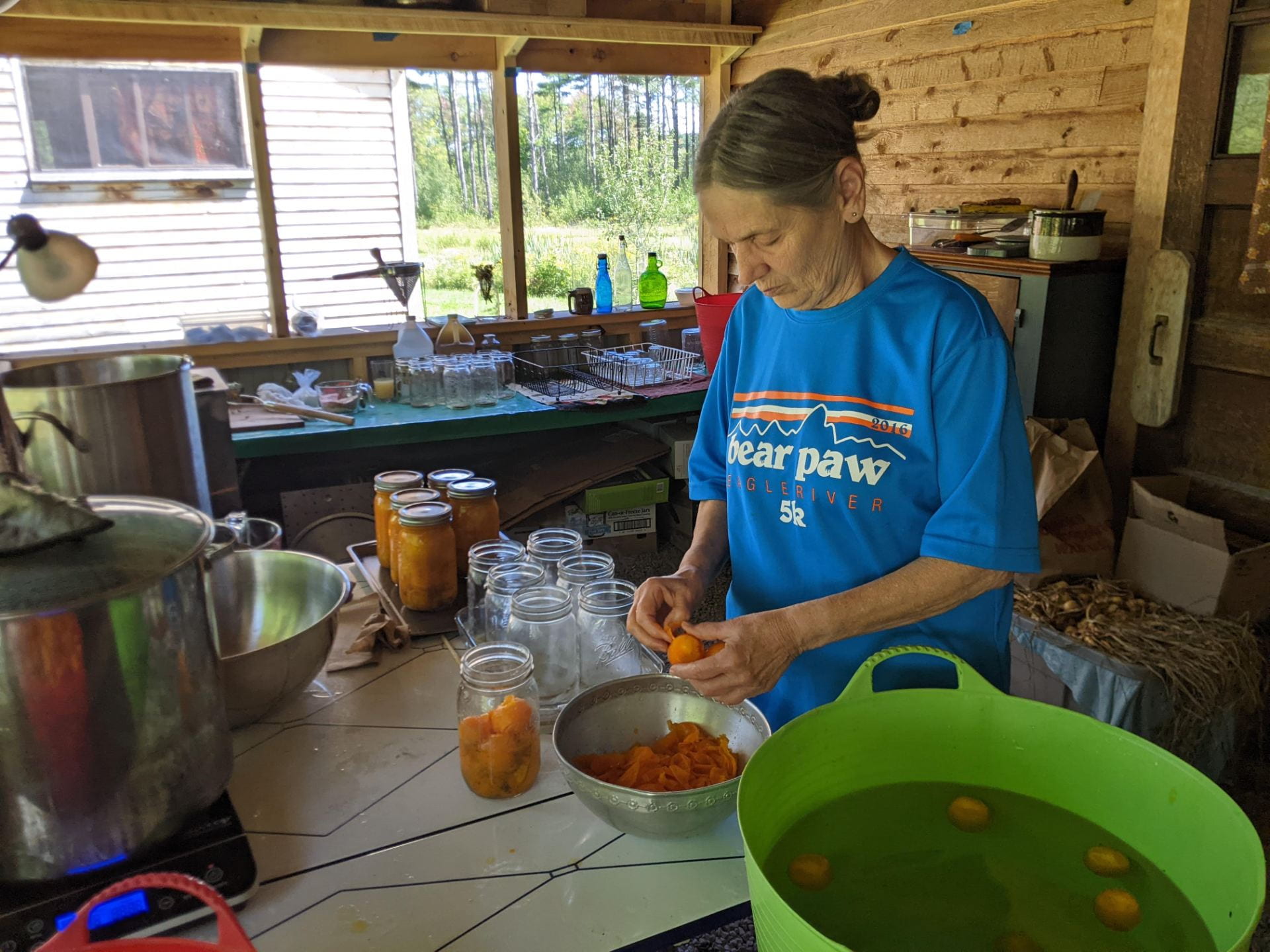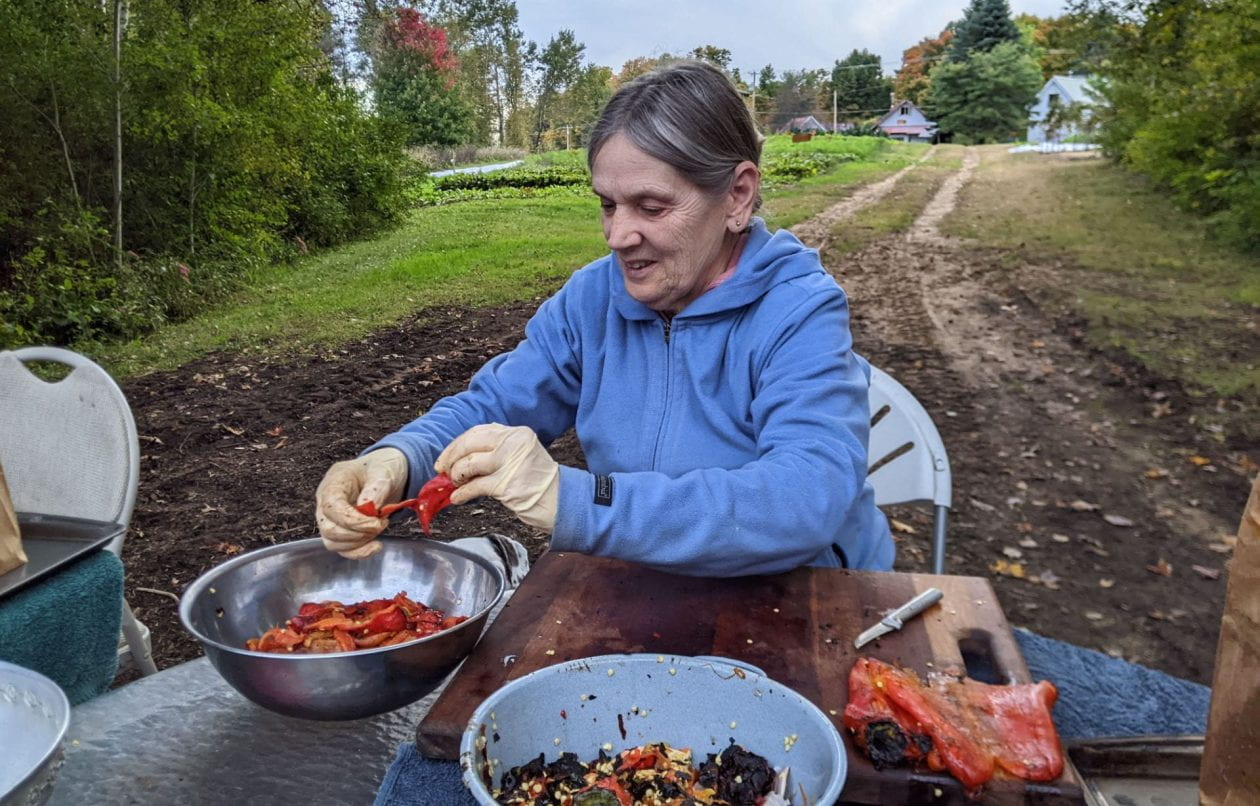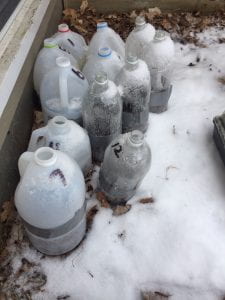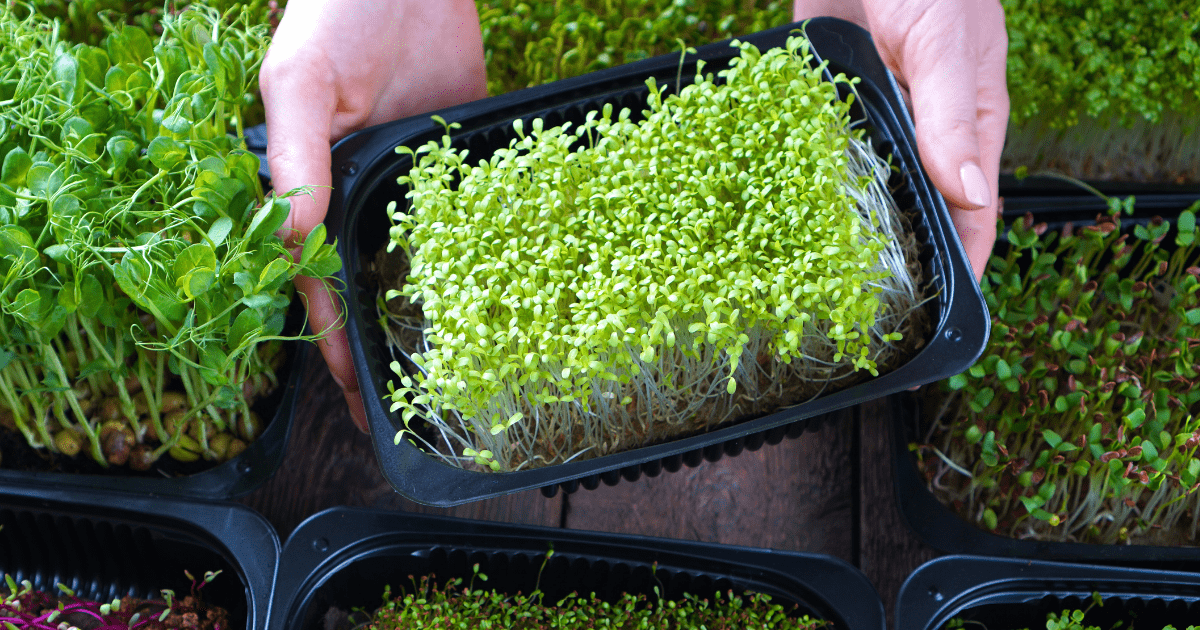With a new cohort of Master Gardener Volunteers ready to begin, we’d like to introduce them (AND YOU!) to the group of MGVs who have sustained this program for the last several years. Meet Carolyn Filippi!
What was your path to gardening?
I grew up in a mid-sized city with virtually no understanding of growing plants. In my high school years my mother had a small garden with tomatoes and peppers each summer but I paid little attention except to pick the fruit. In the early ‘70s I moved from the city to the country to get “back to the land” like many others of my generation. I began farming immediately to provide as much of our food as possible. I remember standing in the garden that first spring holding Rodales’ Organic Gardening book, hoe in hand, reading about how to plant potatoes. I used that book a LOT that first season!

What benefits do you gain from gardening?
There are so many benefits! I love working outdoors. Gardening is great exercise, not just physically but mentally. It’s stimulating to brainstorm and plan new projects, then execute those ideas and solve all the issues that invariably arise throughout the growing season. The unique nature of each season and the sheer number of plants and living creatures in the ecosystem means there’s an endless opportunity for learning.
Gardening also provides a time to be present and contemplative. It’s an opportunity to stop and smell the roses- and then check them for insects, new buds, adequate water, etc.! The garden brings me peace. And the icing on the cake is enjoying the increased wildlife, especially the birds and butterflies.
Why did you want to become a Master Gardener Volunteer?
I was looking for a new way to connect with my community. By becoming a Master Gardener Volunteer I could help others learn to garden or find answers to perplexing problems and I was eager to learn from the experience of other volunteers. Read more Meet Carolyn Filippi, Master Gardener Volunteer



